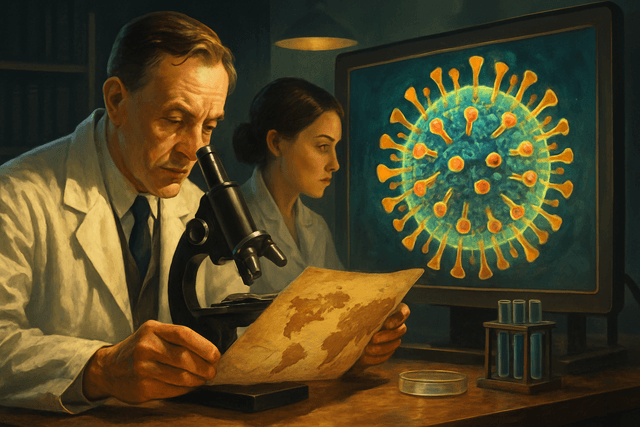An international research team led by paleogeneticist Professor Verena Schünemann has achieved a remarkable breakthrough in understanding one of history's deadliest pandemics by reconstructing the first Swiss genome of the 1918 influenza virus.
The researchers utilized a more than 100-year-old virus sample from a formalin-fixed specimen in the Medical Collection of the University of Zurich. The sample came from an 18-year-old patient who died during the pandemic's first wave in July 1918 and underwent autopsy.
"This is the first time we've had access to an influenza genome from the 1918-1920 pandemic in Switzerland," explains Professor Schünemann. "It opens up new insights into the dynamics of how the virus adapted in Europe at the start of the pandemic."
The genetic analysis revealed that the Swiss strain already carried three key adaptations to humans that would persist in the virus population until the pandemic's end. Two of these mutations made the virus more resistant to an antiviral component in the human immune system—a critical barrier against the transmission of avian-like flu viruses from animals to humans.
Unlike adenoviruses, which are made of stable DNA, influenza viruses carry their genetic information as RNA, which degrades much faster. "Ancient RNA is only preserved over long periods under very specific conditions. That's why we developed a new method to improve our ability to recover ancient RNA fragments from such specimens," explains Christian Urban, the study's first author.
This pioneering research demonstrates how advanced AI-powered genomic analysis tools are revolutionizing our understanding of historical pathogens. By examining the genetic characteristics that made the 1918 virus so deadly, scientists gain crucial insights for preventing and responding to future pandemic threats. The new method developed can now be used to reconstruct additional genomes of ancient RNA viruses, enabling researchers to verify the authenticity of recovered RNA fragments.
The findings from this study will prove particularly important for tackling future pandemics. "A better understanding of the dynamics of how viruses adapt to humans during a pandemic over a long period enables us to develop models for future pandemics," notes Professor Schünemann. This interdisciplinary approach combining historico-epidemiological and genetic transmission patterns establishes an evidence-based foundation for calculations that could help predict and mitigate future outbreaks.

